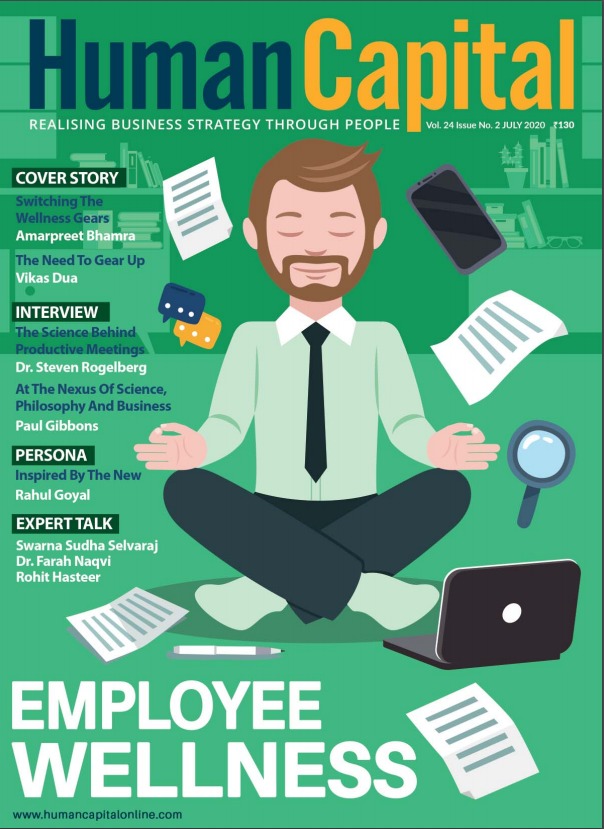You may have a module which is well designed and is the need of the hour, however, if you do not facilitate right, knowledge transfers will be stillborn.
It was the last day of the 10-day residential Leadership Development Programme in a large PSU. The 25-odd participants were tasked with organising the closing ceremony. All the participants and organisations were recognised, thanked and felicitated for the successful closure of the programme. Last but not least, the turn was now that of the Facilitators, Rohan and Deeksha, to be recognised. But the Participants had a special way of thanking them. They had written a song for both of them, and they broke into a beautiful song, the essence of which was saying, a special ‘Thank You, you have changed our lives forever.’
That evening, the adulation and admiration that was being heaped on the Facilitators, was not unusual Good facilitators have participants eating out of their hands. But then, what makes a Good Facilitator? The answer is exceptionally good facilitation skills. Public speaking, a part of good facilitation, does not come easy and is listed as one of the biggest fears people have in life. But good Facilitation goes beyond just public speaking. A Facilitator has two main purposes:-
♦ The absorption of the learning by the participants
♦ To ensure that she has to deliver the learning in the most optimal and effective way
In the Beginning
Well begun is half done. How the session opens, makes a big difference to the rest of the session. Often, facilitators begin with a loud and dramatic start. Participants may be asked to step out for a warm-up, play Truth or Dare, or something equally dramatic. This author would like to suggest that the opening definitely needs to be impactful, but the focus should be on getting the ball rolling gradually. As a Facilitator, we may have led many sessions, but for the Participants, this is different from their daily routine. They are suddenly in the midst of people; they may not be altogether familiar or even comfortable with. Hence, a balance is required between something too dramatic or too tame. Activities such as Two Truths and a Lie, Cross Introductions with unique stories, are good starters. The ambience should become friendly as this is essential for the participants to feel comfortable to open up and have healthy discussions, essential for productive sessions.
Introductions
What is in a name, asked the Bard. Well, lots! According to research, one’s own name is the sweetest sound anyone would love to hear. Facilitators would do well to learn the names of participants well. One could go through the Roster before the Training, and also use Tent Cards or Stickers on which names can be written and then the stickers can be stuck on the top left corner of the participants’ dress. Also, games could be played on how many names are remembered. Side by side, remember to have a nice self-introduction ready. This influences the way in which people will relate to you, the Facilitator. Short, crisp and absorbing – that should be the descriptors of your selfintroduction.
Starting the Session
Once warmed up, it is time to get down to brass tacks. Keeping Adult Learning Principles in mind, it is good to get a sense of what the participants already know, this will help the Facilitator customise her lesson plan accordingly. Remember, one of the factors of success of the facilitator is how Adaptable one is. No two groups are ever the same, hence your content and style need to change that much, one style or content does not fit all. Seek their expectations and jot them down on the flipchart or somewhere you can refer to later at the end of the session and tick all the expectations. This should be done ritualistically as a closure after every session. Also, share the ground rules. Do not overuse fear, but use it lightly, so that it is there to ensure discipline, but do not have too much of it as it impedes learning. Do not forget to share the Agenda upfront. Sharing the Agenda helps telling participants know what to expect and they gear them themselves accordingly, this tends to improve receptivity.
Get Going
Opening with a few slides and running through them is not a good idea. While, I would not recommend you start with a Bang, but do start with an open-ended question, if possible. Or start with a short story or even a Case Study, but not a complicated one. A study where the answers are not too elusive, gets participants interested and aligned more quickly to the topic in focus. It also brings in the nuances of the topic, thereby giving the facilitator an anchor to refer to during the rest of the session.
Getting Deeper
Now as you cover various aspects of the topic, you may be branching out in more than one direction. This can be tricky. Before closing a section and moving to another, revise the gist of the learning through a summary and then introduce the following topic as flowing from the previous one and glide into the new topic. Focus on a theme that covers both. For example, you are talking of Managerial Effectiveness and the next sub-topic you wish to cover is Delegation. So, while discussing Managerial effectiveness, bring focus on the workloads that Managers have and the importance of nurturing talent in the Manager’s team, and one way to offload some of the tasks, while growing your team members to take more responsibility, is through the act of Delegation.
Good facilitators tend to enable. Remember, you have a room full of experience here. Leverage their experience to come up with experiences where they may have witnessed purposeful delegation and also where it did not succeed. Rather than the Facilitator sharing her examples, the participant’s experience is likely to resonate more with the audience, however, do not allow it to be long-winded or go off-tangent.
Signing Off
All good things come to an end and how you close will ensure whether you will end on a good note or otherwise. Do not forget to go over the expectations that had been mentioned at the beginning of the session. As you go over the expectations, discuss each one of them and elicit responses from the group on each. Next, go over the topics covered and re-iterate the gist of each. Alternatively, if you have divided them into groups for activities, use the groups to play a Quiz and get them buzzing. Additionally, you could ask them to develop a few rituals around some of the topics. This would be fun and help to retain learning. And last, but not the least, disburse with a strong, optimistic positive message with a vision of how things will be if all the learning is positively implemented.
Do you look forward to permanently working from home after the pandemic subsides?
Trending
-
SBI General Insurance Launches Digital Health Campaign
-
CredR Rolls Out 'Life Happens' Leave For Its Employees
-
Meesho Announces 30-Week Gender-Neutral Parental Leave Policy
-
Microsoft Unveils Tech Resilience Curriculum To Foster An Inclusive Future
-
60% Indian Professionals Looking For Job Change Due To COVID: Survey
-
SpringPeople And Siemens Collaborate For Digital Transformation Push
-
86% Professionals Believe Hybrid Work Is Essential For Work Life Balance: Report
-
Almost 1 In Every 3 People's Personal Life Affected Due To Work Stress
-
Meesho Rolls Out Reset And Recharge Policy For Employees
-
80% Of Talent Leaders & Academics Say Pandemic Changed Skill Needs For Youth: Report
-
Hero Electric Rolls Out 'Hero Care' Program For Employees
-
Human Capital In Collaboration With ASSOCHAM Hosts Virtual Conference
-
IKEA India, Tata STRIVE Collaborate To Create Employability And Entrepreneurship Opportunities
-
SAP India, Microsoft Launch Tech Skilling Program for Young Women
-
DXC Technology, NASSCOM Collaborate For Employability Skills Program
-
Lenskart To Hire Over 2000 Employees Across India By 2022
-
Mindtree Launches Learn-and-Earn Program
-
Tata AIA Extends 'Raksha Ka Teeka' To Its Employees
-
Swadesh Behera Is The New CPO Of Titan
-
NetConnect Global Plans To Recruit 5000 Tech Professionals In India
-
Hubhopper Plans To Hire 60% Of Indian Podcasters By 2022
-
Corporate India Needs More Women In Leadership Roles: Report
-
Aon to Invest $30 Million and Create 10,000 Apprenticeships by 2030
-
Tech Mahindra Launches ‘Gift a Career’ Initiative for Upskilling of Youth
-
40% Women Prefer Flexible Working Options in Post-COVID World: Survey
-
3 out of 4 companies believe they can effectively hire employees virtually: Report
-
Vodafone , CGI and NASSCOM Foundation launch digital skills platform
-
Odisha: Bank, postal employees to deliver cash for elderly, differently-abled persons
-
Skill India launches AI-based digital platform for "Skilled Workforce"
-
Hiring activity declines 6.73% in first quarter: Survey
-
70% startups impacted by COVID-19 pandemic
-
Bajaj Allianz Life ropes in Santanu Banerjee as CHRO
-
Over 70 Percent MSMEs look at cutting jobs to sustain businesses
-
93 Per Cent employees stressed about returning to office post-lockdown
-
Johnson & Johnson India announces family benefits for same gender partners
-
Indian firms turning friendly towards working mothers
-
Welspun India names Rajendra Mehta as new CHRO
-
Wipro partners with NASSCOM to launch Future Skills platform



Human Capital is niche media organisation for HR and Corporate. Our aim is to create an outstanding user experience for all our clients, readers, employers and employees through inspiring, industry-leading content pieces in the form of case studies, analysis, expert reports, authored articles and blogs. We cover topics such as talent acquisition, learning and development, diversity and inclusion, leadership, compensation, recruitment and many more.
Subscribe Now


.PNG)









































Comment